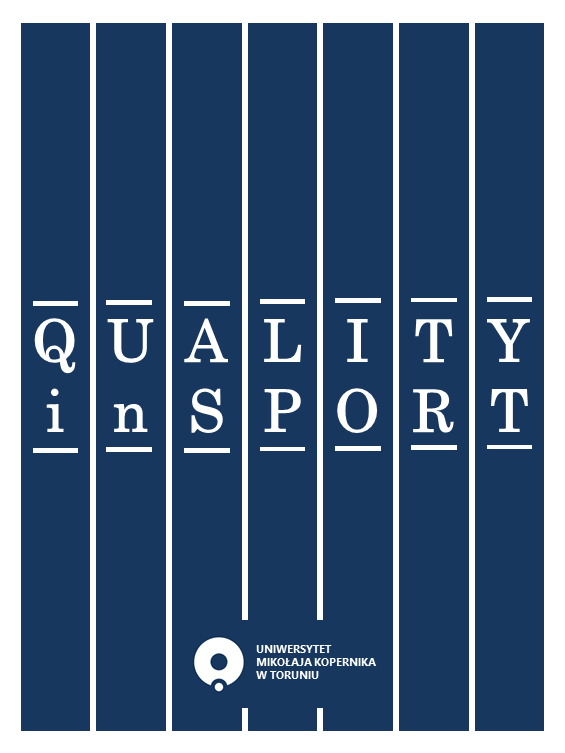The Evolution of Energy Deficiency Disorders in Female Athletes: Female Athlete Triad and Relative Energy Deficiency in Sport: Pathophysiology, Diagnosis, and Multidisciplinary Management - a literature review
DOI:
https://doi.org/10.12775/QS.2025.42.60657Keywords
Female Athlete Triad, Relative Energy Deficiency in Sport, Low Energy Availability, Menstrual Dysfunction, Stress Fractures, Energy Deficiency Syndromes, Female Athlete HealthAbstract
Introduction:
The growing participation of female athlethes in competitive and recreational sports has brought attention to sport-specific health concerns related to energy imbalance. The Female Athlete Triad (FAT), characterized by low energy availability (LEA), menstrual dysfunction and low bone mineral density (BMD), and the broader concept of Relative Energy Deficiency in Sport (RED-S) are critical syndromes affecting both health and performance.
Purpose:
The objective of this review is to examine the current literature on the etiology, pathophysiology, clinical presentation, diagnostic methods, management and prevention of FAT and RED-S in female athletes, with an emphasis on early recognition and interdisciplinary care.
Materials and methods:
This review is based on a comprehensive literature search conducted on articles sourced from PubMed and Cochrane. The listed keywords were used and analysed for topic relevance and knowledge currency.
Conclusion:
FAT and RED-S remain underdiagnosed despite significant health risks such as infertility, osteoporosis and reduced performance. Effective prevention and management depend on restoring energy balance that should be supported by a multidisciplinary care team. Continuation of research, education and monitoring are essential to minimize long-term consequences and promote a sport culture that prioritizes both performance and athlete well-being.
References
[1] A. W. Kelly and S. Hecht, “The female athlete triad,” 2022. doi: 10.21037/aoj-2020-03.
[2] A. R. Coelho, G. Cardoso, M. E. Brito, I. N. Gomes, and M. J. Cascais, “The Female Athlete Triad/Relative Energy Deficiency in Sports (RED-S),” Revista Brasileira de Ginecologia e Obstetricia, vol. 43, no. 5, pp. 395–402, May 2021, doi: 10.1055/s-0041-1730289.
[3] D. Brewington, D. Johnson, M. Stovak, and A. T. Harvey, “The Female Athlete Triad: An Assessment of Current Practices in Primary Care and Benefit of Educational Intervention,” 2012.
[4] J. Mehta, B. Thompson, and J. M. Kling, “The female athlete triad: It takes a team,” Apr. 01, 2018, Cleveland Clinic Educational Foundation. doi: 10.3949/ccjm.85a.16137.
[5] A. P. Morgenthal, “Female athlete triad,” 2002.
[6] J. P. Leonard and M. R. Hutchinson, “The female athlete triad: a current concepts review Christopher A George (MD).”
[7] N. I. Williams, S. M. Statuta, and A. Austin, “Female Athlete Triad: Future Directions for Energy Availability and Eating Disorder Research and Practice,” Oct. 01, 2017, W.B. Saunders. doi: 10.1016/j.csm.2017.05.003.
[8] Suryawati, F. F. Dieny, R. Purwanti, A. F. A. Tsani, and N. Widyastuti, “Risk factors of eating disorders in young female athletes,” Food Res, vol. 4, pp. 83–91, 2020, doi: 10.26656/fr.2017.4(S3).S23.
[9] M. Mountjoy et al., “The IOC consensus statement: Beyond the Female Athlete Triad-Relative Energy Deficiency in Sport (RED-S),” Br J Sports Med, vol. 48, no. 7, pp. 491–497, 2014, doi: 10.1136/bjsports-2014-093502.
[10] A. Sim and S. F. Burns, “Review: questionnaires as measures for low energy availability (LEA) and relative energy deficiency in sport (RED-S) in athletes,” Dec. 01, 2021, BioMed Central Ltd. doi: 10.1186/s40337-021-00396-7.
[11] K. E. Ackerman et al., “Methodology for studying Relative Energy Deficiency in Sport (REDs): A narrative review by a subgroup of the International Olympic Committee (IOC) consensus on REDs,” Sep. 01, 2023, BMJ Publishing Group. doi: 10.1136/bjsports-2023-107359.
[12] T. M. da R. lemos Costa, V. Z. C. Borba, R. G. P. Correa, and C. A. Moreira, “Stress fractures,” 2022, Sociedade Brasileira de Endocrinologia e Metabologia. doi: 10.20945/2359-3997000000562.
[13] N. N. Kale, C. X. Wang, V. J. Wu, C. Miskimin, and M. K. Mulcahey, “Age and Female Sex Are Important Risk Factors for Stress Fractures: A Nationwide Database Analysis,” Sports Health, vol. 14, no. 6, pp. 805–811, Nov. 2022, doi: 10.1177/19417381221080440.
[14] A. E. Jeukendrup et al., “Does Relative Energy Deficiency in Sport (REDs) Syndrome Exist?,” Sports Medicine, vol. 54, no. 11, pp. 2793–2816, Nov. 2024, doi: 10.1007/s40279-024-02108-y.
[15] H. E. Cabre, S. R. Moore, A. E. Smith-Ryan, and A. C. Hackney, “Relative Energy Deficiency in Sport (RED-S): Scientific, Clinical, and Practical Implications for the Female Athlete,” 2022, Dynamic Media Sales Verlag. doi: 10.5960/dzsm.2022.546.
[16] A. E. Warrick, B. Hassid, B. Coleman, C. Cansino, and M. Faustin, “Multidisciplinary physician survey assessing knowledge of the female athlete triad and relative energy deficiency in sport,” J Eat Disord, vol. 11, no. 1, Dec. 2023, doi: 10.1186/s40337-023-00800-4.
[17] M. Grabia, J. Perkowski, K. Socha, and R. Markiewicz-Żukowska, “Female Athlete Triad and Relative Energy Deficiency in Sport (REDs): Nutritional Management,” 2024. doi: 10.3390/nu16030359.
[18] J. L. Areta, H. L. Taylor, and K. Koehler, “Low energy availability: history, definition and evidence of its endocrine, metabolic and physiological effects in prospective studies in females and males,” Jan. 01, 2021, Springer Science and Business Media Deutschland GmbH. doi: 10.1007/s00421-020-04516-0.
[19] F. F. Lu et al., “Investigating the metabolomic pathways in female reproductive endocrine disorders: a Mendelian randomization study,” Front Endocrinol (Lausanne), vol. 15, 2024, doi: 10.3389/fendo.2024.1438079.
[20] E. Matzkin, E. J. Curry, and K. Whitlock, “Female Athlete Triad: Past, Present, and Future,” 2015. doi: 10.5435/JAAOS-D-14-00168.
[21] J. K. Ihalainen et al., “Beyond Menstrual Dysfunction: Does Altered Endocrine Function Caused by Problematic Low Energy Availability Impair Health and Sports Performance in Female Athletes?,” Sep. 01, 2024, Springer Science and Business Media Deutschland GmbH. doi: 10.1007/s40279-024-02065-6.
Downloads
Published
How to Cite
Issue
Section
License
Copyright (c) 2025 Katarzyna Bartnik, Alicja Winkowska, Jakub Jan Pokrzepa, Gabriela Blecharz, Julia Szwech, Marlena Jankowska, Klara Hosiawa, Aleksandra Siewielec, Karolina Mędrysa, Anna Chlubek

This work is licensed under a Creative Commons Attribution-NonCommercial-ShareAlike 4.0 International License.
Stats
Number of views and downloads: 852
Number of citations: 0



